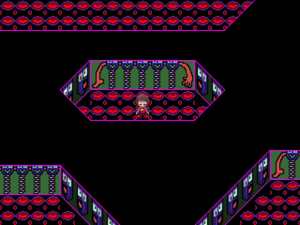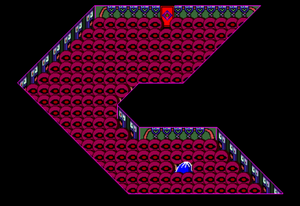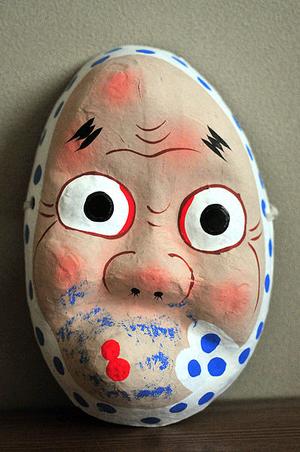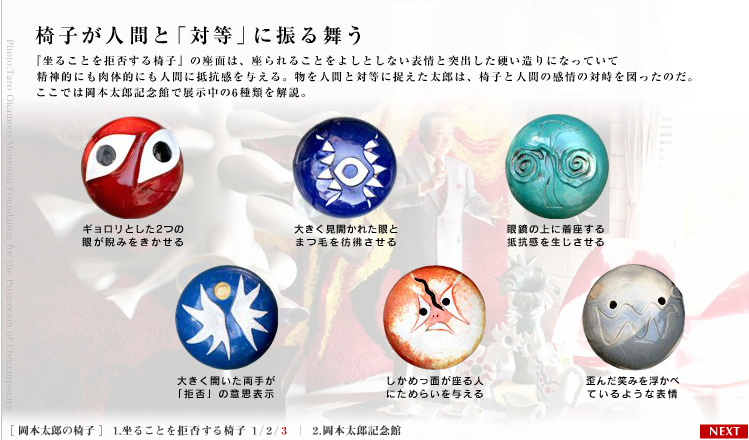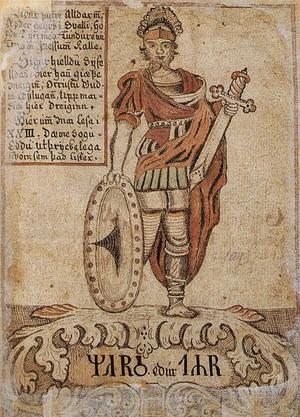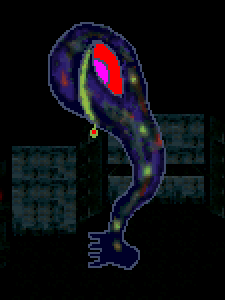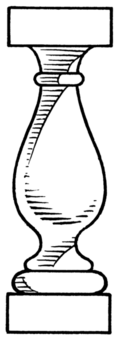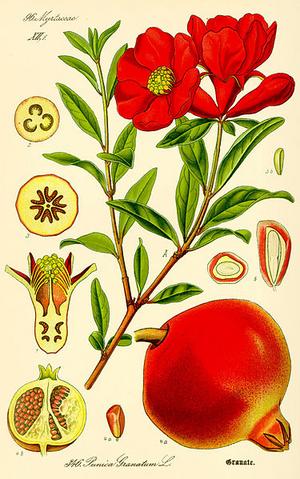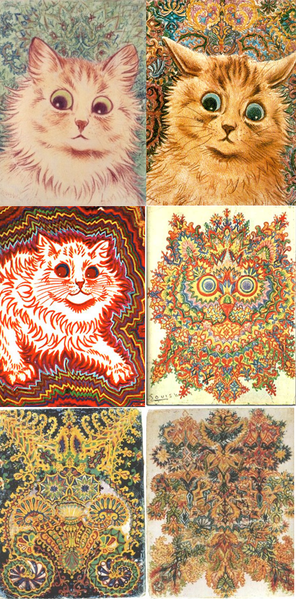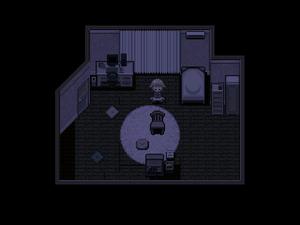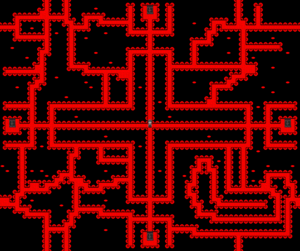>Mt.kiki No edit summary |
>Mt.kiki No edit summary |
||
| Line 96: | Line 96: | ||
==[[Number_World#The_Stabbing_Room|The Stabbing Room]]([http://en.wikipedia.org/wiki/Mount_Fuji Mount Fuji])== | ==[[Number_World#The_Stabbing_Room|The Stabbing Room]]([http://en.wikipedia.org/wiki/Mount_Fuji Mount Fuji])== | ||
Mount Fuji <span style="font-weight: normal;">(富士山<span class="t_nihongo_comma" style="display: none;">,</span> ''Fuji-san''<sup>[http://en.wikipedia.org/wiki/Help:Installing_Japanese_character_sets <span class="t_nihongo_icon" style="font: bold 80%/normal sans-serif; padding: 0px 0.1em; color: rgb(0, 0, 238); text-decoration: none; font-size-adjust: none; font-stretch: normal;"><u>?</u></span>]</sup>, IPA: [http://en.wikipedia.org/wiki/Help:IPA_for_Japanese <u>[ɸɯꜜdʑisaɴ</u>]] ([http://en.wikipedia.org/wiki/File:Fuji-san.ogg] [http://upload.wikimedia.org/wikipedia/commons/c/c1/Fuji-san.ogg <u>listen</u>]))</span>, located on Honshu Island, is the highest [http://en.wikipedia.org/wiki/Mountain <u>mountain</u>] in [http://en.wikipedia.org/wiki/Japan <u>Japan</u>] at 3,776.24 m (12,389 ft).<sup class="reference" id="cite_ref-Fujiinfo_1-2">[http://en.wikipedia.org/wiki/Mount_Fuji#cite_note-Fujiinfo-1 <u>[1</u>]]</sup> An [http://en.wikipedia.org/wiki/Active_volcano <u>active</u>] [http://en.wikipedia.org/wiki/Stratovolcano <u>stratovolcano</u>]<sup class="reference" id="cite_ref-5">[http://en.wikipedia.org/wiki/Mount_Fuji#cite_note-5 <u>[5</u>]]</sup><sup class="reference" id="cite_ref-6">[http://en.wikipedia.org/wiki/Mount_Fuji#cite_note-6 <u>[6</u>]]</sup> that last erupted in 1707–08, Mount Fuji lies about 100 kilometres (62 mi) south-west of [http://en.wikipedia.org/wiki/Tokyo <u>Tokyo</u>], and can be seen from there on a clear day. Mount Fuji's exceptionally symmetrical cone, which is snow-capped several months a year, is a well-known symbol of Japan and it is frequently depicted in art and photographs, as well as visited by sightseers and climbers. It is one of Japan's "Three Holy Mountains" <span style="font-weight: normal;">(三霊山<span class="t_nihongo_comma" style="display: none;">,</span> ''Sanreizan''<sup>[http://en.wikipedia.org/wiki/Help:Installing_Japanese_character_sets <span class="t_nihongo_icon" style="font: bold 80%/normal sans-serif; padding: 0px 0.1em; color: rgb(0, 0, 238); text-decoration: none; font-size-adjust: none; font-stretch: normal;"><u>?</u></span>]</sup>)</span> along with [http://en.wikipedia.org/wiki/Mount_Tate <u>Mount Tate</u>] and [http://en.wikipedia.org/wiki/Mount_Haku <u>Mount Haku</u>]; it is a [http://en.wikipedia.org/wiki/List_of_Special_Places_of_Scenic_Beauty,_Special_Historic_Sites_and_Special_Natural_Monuments <u>Special Place of Scenic Beauty</u>], a [http://en.wikipedia.org/wiki/Monuments_of_Japan <u>Historic Site</u>], and has been submitted for future inscription on the [http://en.wikipedia.org/wiki/List_of_World_Heritage_Sites_in_Japan <u>World Heritage List</u>] as a Cultural (rather than Natural) Site.<sup class="reference" id="cite_ref-7">[http://en.wikipedia.org/wiki/Mount_Fuji#cite_note-7 <u>[7</u>]]</sup><sup class="reference" id="cite_ref-8">[http://en.wikipedia.org/wiki/Mount_Fuji#cite_note-8 <u>[8</u>]]</sup><sup class="reference" id="cite_ref-9">[http://en.wikipedia.org/wiki/Mount_Fuji#cite_note-9 <u>[9</u>]]</sup> | Mount Fuji <span style="font-weight: normal;">(富士山<span class="t_nihongo_comma" style="display: none;">,</span> ''Fuji-san''<sup>[http://en.wikipedia.org/wiki/Help:Installing_Japanese_character_sets <span class="t_nihongo_icon" style="font: bold 80%/normal sans-serif; padding: 0px 0.1em; color: rgb(0, 0, 238); text-decoration: none; font-size-adjust: none; font-stretch: normal;"><u>?</u></span>]</sup>, IPA: [http://en.wikipedia.org/wiki/Help:IPA_for_Japanese <u>[ɸɯꜜdʑisaɴ</u>]] ([http://en.wikipedia.org/wiki/File:Fuji-san.ogg] [http://upload.wikimedia.org/wikipedia/commons/c/c1/Fuji-san.ogg <u>listen</u>]))</span>, located on Honshu Island, is the highest [http://en.wikipedia.org/wiki/Mountain <u>mountain</u>] in [http://en.wikipedia.org/wiki/Japan <u>Japan</u>] at 3,776.24 m (12,389 ft).<sup class="reference" id="cite_ref-Fujiinfo_1-2">[http://en.wikipedia.org/wiki/Mount_Fuji#cite_note-Fujiinfo-1 <u>[1</u>]]</sup> | ||
An [http://en.wikipedia.org/wiki/Active_volcano <u>active</u>] [http://en.wikipedia.org/wiki/Stratovolcano <u>stratovolcano</u>]<sup class="reference" id="cite_ref-5">[http://en.wikipedia.org/wiki/Mount_Fuji#cite_note-5 <u>[5</u>]]</sup><sup class="reference" id="cite_ref-6">[http://en.wikipedia.org/wiki/Mount_Fuji#cite_note-6 <u>[6</u>]]</sup> that last erupted in 1707–08, Mount Fuji lies about 100 kilometres (62 mi) south-west of [http://en.wikipedia.org/wiki/Tokyo <u>Tokyo</u>], and can be seen from there on a clear day. Mount Fuji's exceptionally symmetrical cone, which is snow-capped several months a year, is a well-known symbol of Japan and it is frequently depicted in art and photographs, as well as visited by sightseers and climbers. It is one of Japan's "Three Holy Mountains" <span style="font-weight: normal;">(三霊山<span class="t_nihongo_comma" style="display: none;">,</span> ''Sanreizan''<sup>[http://en.wikipedia.org/wiki/Help:Installing_Japanese_character_sets <span class="t_nihongo_icon" style="font: bold 80%/normal sans-serif; padding: 0px 0.1em; color: rgb(0, 0, 238); text-decoration: none; font-size-adjust: none; font-stretch: normal;"><u>?</u></span>]</sup>)</span> along with [http://en.wikipedia.org/wiki/Mount_Tate <u>Mount Tate</u>] and [http://en.wikipedia.org/wiki/Mount_Haku <u>Mount Haku</u>]; it is a [http://en.wikipedia.org/wiki/List_of_Special_Places_of_Scenic_Beauty,_Special_Historic_Sites_and_Special_Natural_Monuments <u>Special Place of Scenic Beauty</u>], a [http://en.wikipedia.org/wiki/Monuments_of_Japan <u>Historic Site</u>], and has been submitted for future inscription on the [http://en.wikipedia.org/wiki/List_of_World_Heritage_Sites_in_Japan <u>World Heritage List</u>] as a Cultural (rather than Natural) Site.<sup class="reference" id="cite_ref-7">[http://en.wikipedia.org/wiki/Mount_Fuji#cite_note-7 <u>[7</u>]]</sup><sup class="reference" id="cite_ref-8">[http://en.wikipedia.org/wiki/Mount_Fuji#cite_note-8 <u>[8</u>]]</sup><sup class="reference" id="cite_ref-9">[http://en.wikipedia.org/wiki/Mount_Fuji#cite_note-9 <u>[9</u>]]</sup> | |||
[[File:The_Stabbing_Room.png|thumb|(一富士、二鷹、三茄子; 1. Fuji, 2. Hawk, 3. Eggplant)]] | [[File:The_Stabbing_Room.png|thumb|(一富士、二鷹、三茄子; 1. Fuji, 2. Hawk, 3. Eggplant)]] | ||
==[http://en.wikipedia.org/wiki/Mount_Fuji Mount Fuji]([http://en.wikipedia.org/wiki/Hatsuyume Hatsuyume])== | ==[http://en.wikipedia.org/wiki/Mount_Fuji Mount Fuji]([http://en.wikipedia.org/wiki/Hatsuyume Hatsuyume])== | ||
[http://ja.wikipedia.org/wiki/%E5%88%9D%E5%A4%A2#.E4.B8.80.E5.AF.8C.E5.A3.AB.E4.BA.8C.E9.B7.B9.E4.B8.89.E8.8C.84.E5.AD.90 <u>2.2 一富士二鷹三茄子</u>] | [http://ja.wikipedia.org/wiki/%E5%88%9D%E5%A4%A2#.E4.B8.80.E5.AF.8C.E5.A3.AB.E4.BA.8C.E9.B7.B9.E4.B8.89.E8.8C.84.E5.AD.90 <u>2.2 一富士二鷹三茄子</u>] | ||
Although this superstition is well known in Japan, often memorized in the form ''Ichi-Fuji, Ni-Taka, San-Nasubi'' (一富士、二鷹、三茄子; 1. Fuji, 2. Hawk, 3. Eggplant), the continuation of the list is not as well known. The continuation is ''Yon-Sen, Go-Tabako, Roku-Zatō'' (四扇、五煙草、六座頭; 4. Fan, 5. Tobacco, 6. Blind [http://en.wikipedia.org/wiki/Acupressure <u>acupressurer</u>]). The origins of this trio are less well known, and it is unclear whether they were added after the original three or whether the list of six originated at the same time. | |||
Although this superstition is well known in Japan, often memorized in the form ''Ichi-Fuji, Ni-Taka, San-Nasubi'' (一富士、二鷹、三茄子; 1. Fuji, 2. Hawk, 3. Eggplant), the continuation of the list is not as well known. | |||
The continuation is ''Yon-Sen, Go-Tabako, Roku-Zatō'' (四扇、五煙草、六座頭; 4. Fan, 5. Tobacco, 6. Blind [http://en.wikipedia.org/wiki/Acupressure <u>acupressurer</u>]). The origins of this trio are less well known, and it is unclear whether they were added after the original three or whether the list of six originated at the same time. | |||
[[File:LSD (video game) - Mt.Fuji|thumb|right|335 px|OSD『LSD (video game)』(October 22, 1998)]] | [[File:LSD (video game) - Mt.Fuji|thumb|right|335 px|OSD『LSD (video game)』(October 22, 1998)]] | ||
| Line 115: | Line 120: | ||
==[[Number_World#The_Stabbing_Room|The Stabbing Room]]([http://en.wikipedia.org/wiki/Hyottoko Hyottoko])== | ==[[Number_World#The_Stabbing_Room|The Stabbing Room]]([http://en.wikipedia.org/wiki/Hyottoko Hyottoko])== | ||
[[ | ひょっとこは、口をすぼめて曲げたような表情の男性、あるいはその[http://ja.wikipedia.org/wiki/%E9%9D%A2 <u>面</u>]のこと。 | ||
A clownish mask([http://en.wikipedia.org/wiki/Hyottoko Hyottoko]) is the man of expression who puckered up and bent the mouth, or a thing of the field. | |||
また[http://ja.wikipedia.org/wiki/%E5%B2%A9%E6%89%8B%E7%9C%8C <u>岩手県</u>][http://ja.wikipedia.org/wiki/%E5%A5%A5%E5%B7%9E%E5%B8%82 <u>奥州市</u>]の江刺地方に残る民話に「ひょっとこのはじまり」というのがあり、その中ではヘソから金を生む奇妙な顔の子供であり、死んでから自分に似せた面を竈の前に架けておけば家が富み栄えると夢枕に立ったという話である。 | |||
[[File:Stabbing-room-clear.png|thumb|left|Two eyes,lips sake cup(Hyottoko)]]※([http://www.weblio.jp/content/%E6%88%90%E5%8F%A5 <u>成句</u>])[http://www.weblio.jp/content/%E5%A4%A2%E6%9E%95%E3%81%AB%E7%AB%8B%E3%81%A4 <u>夢枕に立つ</u>] →[http://ejje.weblio.jp/content/appear+to <u>appear to</u>] one [http://ejje.weblio.jp/content/in+a <u>in a</u>] [[http://ejje.weblio.jp/content/one%27s <u>one's</u>]] [http://ejje.weblio.jp/content/dream <u>dream</u>]; [http://ejje.weblio.jp/content/appear+to+one+in+one%27s+sleep <u>appear to one in one's sleep</u>] | |||
Moreover, the folktale which remains in the Esashi district of an [http://en.wikipedia.org/wiki/Iwate_Prefecture Iwate Prefecture] [http://en.wikipedia.org/wiki/%C5%8Csh%C5%AB,_Iwate Ōshū] city has "the beginning of [http://en.wikipedia.org/wiki/Hyottoko Hyottoko]."<br />In it, it is a child of a strange face who induces gold from a navel, and is the talk of having appeared in its dream when constructing the field modeled on itself in front of the iron pot and the house was rich and prospered, after dying. | |||
※Coin can be obtained by killing a [http://List_of_Characters#Wheelies_.28Number_World.29 Wheelies]→[http://en.wikipedia.org/wiki/Hyottoko Hyottoko] appears in its dream and wealth prospers? | |||
==[[List_of_Characters#Wheelies_.28Number_World.29|Wheelies(Number World)]]([http://en.wikipedia.org/wiki/Tar%C5%8D_Okamoto Tarō Okamoto])== | ==[[List_of_Characters#Wheelies_.28Number_World.29|Wheelies(Number World)]]([http://en.wikipedia.org/wiki/Tar%C5%8D_Okamoto Tarō Okamoto])== | ||
Revision as of 04:01, 4 June 2013
Number World(The Evil Eye Door)
3 神話・伝説の中の隻眼(3 One-eye in the legend, myth)
隻眼(せきがん)もしくは独眼(どくがん)とは、片側の目そのものや視力を失った身体障害の状態をいう。
隻眼(seki-gan) or 独眼(doku-gan) is, refers to a state of disability that has lost sight of the eye itself and one side.
3.1 形態(3.1 Form)
隻眼は、字義的には本来二つあるべき目のうちの片方が失われたか、または存在しない左右非対称な形象であるが、一部においては顔の真ん中に(単眼症のように)一つだけ目が存在すると表現されることもある(キュクロープスなど)。
Sekigan, which is a shape asymmetrical non-existent one of the eye should be two original is lost or is literally (as in cyclopia) in some one in the middle of the face eyes may be expressed only exists (such as Cyclops).
3.3 起源(3.3 Origin)
ケルト神話の神ルーは戦時中片目だけを開き(これは英雄クー・フーリンも同じ。またルーの祖父は片目が邪眼だった)、一本脚で戦士たちを鼓舞したが、ヌァザは戦争中片腕を切断された。ケルトの事例については邪眼との関連が強いことから、戦闘時の呪術に関係するものだという説も提出されている (Jacqueline Borsje, 'The Evil Eye' in early Irish literature and law) 。
(One eye was evil eyes this grandfather Lou is also. Same Khoo Fuling hero), but to inspire warriors in leg one, Lou gods Celtic Nu~aza during the war only open one eye during the war I was cut off an arm. Association with the evil eye from stronger, have also been submitted relating to the theory that something magic in combat for the case of Celtic (Jacqueline Borsje, 'The Evil Eye' in early Irish literature and law).
北欧神話が所属するインド・ヨーロッパ語族の伝承については、ジョルジュ・デュメジルが彼の三機能仮説における第一機能との関連を主張した。明確な理由は不明だが、第一機能(呪術的主権・司法的主権の二項対立がある)のうち一方は片目がなく、もう一方は片腕がない、というものである。
For Indo-European tradition that belongs to Norse mythology, Georges Dumezil has claimed the first function in the context of his three feature hypothesis. Obvious reason is unknown, but is one of those (there is a dichotomy of sovereignty and judicial sovereignty magical) function does not have a first one eye, one that there is no other arm.
つまり隻腕ならびに一本足が、この場合では隻眼、隻腕の組み合わせになっている。たとえばオーディンは片目がないが、テュールは片腕がない(フェンリル狼に食いちぎられた)。
One leg, but in this case is a combination Sekigan, namely the one-armed and one-armed. Odin has one eye is not, for example, is Te~yuru (which was bitten off by the wolf Fenrir) there is no arm.
Number World(Chuck Man)
3.3 起源(3.3 Origin)
ほかにも隻眼は男根の象徴であるとする説(民俗学者アラン・ダンデスのWet and Dry,the Evil Eyeや堀田吉雄『山の神の研究』など)、太陽の象徴であるとする説(古典学者アーサー・バーナード・クックのZeusvol.2やその追随者たち)など多くの仮説が存在するが、いずれも決定的なものではない。
In addition to the theory (such as Wet and Dry Alan Dandesu folklorist, "Study of the mountain god" Yoshio Hotta and the Evil Eye) theory that is a symbol of phallic, and is a symbol of the sun Sekigan Arthur classical scholar (hypothesis, and much more) and that his followers Zeusvol.2 Bernard Cook exists but is not critical either.
Number World(Crick in the Neck)
3.3 起源(3.3 Origin)
学術的な観点からもいくつかの説が唱えられている。日本だけに限れば、柳田國男は、Several theories have been cast from an academic point of view. Be limited to Japan, "Kunio Yanagida",
もともと神に捧げるべき生け贄の人間が逃亡しないように片目(と片脚)を傷つけていたのが神格と同一視されるようになったのが原因であると考えた(『一つ目小僧その他』)。
the cause had been hurt in one eye (one leg) and have that came to be identified with the deity of human sacrifice to be dedicated to God originally to prevent the escape it was considered to be (and so "one-eyed boys")
The Stabbing Room(Mount Fuji)
Mount Fuji (富士山 Fuji-san?, IPA: [ɸɯꜜdʑisaɴ] ([1] listen)), located on Honshu Island, is the highest mountain in Japan at 3,776.24 m (12,389 ft).[1]
An active stratovolcano[5][6] that last erupted in 1707–08, Mount Fuji lies about 100 kilometres (62 mi) south-west of Tokyo, and can be seen from there on a clear day. Mount Fuji's exceptionally symmetrical cone, which is snow-capped several months a year, is a well-known symbol of Japan and it is frequently depicted in art and photographs, as well as visited by sightseers and climbers. It is one of Japan's "Three Holy Mountains" (三霊山 Sanreizan?) along with Mount Tate and Mount Haku; it is a Special Place of Scenic Beauty, a Historic Site, and has been submitted for future inscription on the World Heritage List as a Cultural (rather than Natural) Site.[7][8][9]
Mount Fuji(Hatsuyume)
Although this superstition is well known in Japan, often memorized in the form Ichi-Fuji, Ni-Taka, San-Nasubi (一富士、二鷹、三茄子; 1. Fuji, 2. Hawk, 3. Eggplant), the continuation of the list is not as well known.
The continuation is Yon-Sen, Go-Tabako, Roku-Zatō (四扇、五煙草、六座頭; 4. Fan, 5. Tobacco, 6. Blind acupressurer). The origins of this trio are less well known, and it is unclear whether they were added after the original three or whether the list of six originated at the same time.
Mount Fuji(LSD (video game))
Developer(s) - OutSide Directors Company
Platform(s) - PlayStation, PSN
Release date(s) - JP October 22, 1998
『LSD (video game) - The Opening Movie』 #0:00~0:38
http://en.wikipedia.org/wiki/LSD_(video_game)
The Stabbing Room(Hyottoko)
ひょっとこは、口をすぼめて曲げたような表情の男性、あるいはその面のこと。
A clownish mask(Hyottoko) is the man of expression who puckered up and bent the mouth, or a thing of the field.
また岩手県奥州市の江刺地方に残る民話に「ひょっとこのはじまり」というのがあり、その中ではヘソから金を生む奇妙な顔の子供であり、死んでから自分に似せた面を竈の前に架けておけば家が富み栄えると夢枕に立ったという話である。
※(成句)夢枕に立つ →appear to one in a [one's] dream; appear to one in one's sleep
Moreover, the folktale which remains in the Esashi district of an Iwate Prefecture Ōshū city has "the beginning of Hyottoko."
In it, it is a child of a strange face who induces gold from a navel, and is the talk of having appeared in its dream when constructing the field modeled on itself in front of the iron pot and the house was rich and prospered, after dying.
※Coin can be obtained by killing a Wheelies→Hyottoko appears in its dream and wealth prospers?
Wheelies(Number World)(Tarō Okamoto)
Tarō Okamoto (岡本 太郎 Okamoto Tarō?, February 26, 1911 – January 7, 1996) was a Japanese artist noted for his abstract and avant-garde paintings and sculpture.
Okamoto Tarō "Chair refused to sit" (Ware, 1963)
http://media.excite.co.jp/ism/097/01okamoto1.html
椅子が人間と「対等」に振る舞う
Chair act on an equal footing with man
『坐ることを拒否する椅子』の座面は、座られることをよしとしない表情と突出した硬い造りになっていて精神的にも肉体的にも人間に抵抗感を与える。
Bearing surface of the "chair refused to sit" gives a sense of resistance to the human both mentally and physically they become brick hard that protrudes expression and does not good to be sitting.
物を人間と対等に捉えた太郎は、椅子と人間の感情の対峙を図ったのだ。
ここでは岡本太郎記念館で展示中の6種類を解説。
Taro was caught on an equal footing with human things, he was the face of human emotions and Haka~tsu chair. Here describes the six types of Taro Okamoto Memorial Museum Exhibition.
1、ギョロリとした2つの 2、大きく見開かれた眼と 3、眼鏡の上に着座する
眼が睨みをきかせる まつ毛を彷彿させる 抵抗感を生じさせる
1.Secret peeled,Two eyes use a glare 2.Eyelashes & eye greatly opened 3.Bad feel which sits down on glasses.
4、大きく開いた両手が 5、しかめっ面が座る人 6、歪んだ笑みを浮かべ
「拒否」の意思表示 にためらいを与える ているような表情
4.Both hands open,Intention to "refuse" 5.Hesitate to give the man who sit grimace 6.Expression of scornful laugh
The Stairway(Diyu)
東アジアの仏教では、地獄の色は道教的に、あるいはその影響を受けた陰陽道的に「黒」で表す。
At the Buddhism of East Asia, an infernal color is expressed with "black" to a Taoism target or the Yin Yang philosophy target which was subject to the influence.
餓鬼は赤、畜生は黄、修羅は青、この三色を混ぜると地獄の黒になると言われる。
A red brat, a yellow beast, the blue favorable realms of bellicose spirits.
If these 3 colors are mixed, it will be said that it becomes infernal black.
また、節分で追われる赤鬼、黄鬼、青鬼はここから来ている。
Moreover, the red devil, yellow devil, and the blue devil who are ousted on the eve of the beginning of spring are coming from here.
KyuuKyuu-kun(Týr)
※KyuuKyuu-kun is only Right arm? http://yumenikki.wikia.com/wiki/Number_World(name)#Number_World.28The_Evil_Eye_Door.29
4 神話・伝承 (One-Hand in the legend, myth)
時代、地方によれば「身体障害者には不思議な力が宿る」とされたこともあり、隻眼の神などがいるがあまり四肢の欠損した神などが登場することは少ない。しかし、腕の喪失はなんらかの力の喪失として語られることがある。腕とともに力を失った例として、北欧神話のテュールがいる。伝承によれば、神々の間ではテュールの右手にかけて約束をする習慣があったというが、彼の右腕喪失とともに約束を守るという拘束力が弱まったというのである。
Rarely, such as God, which is deficient in the extremities too appeared sometimes age was According "to persons with disabilities mysterious power dwells" and in a rural location, but there is such as God of Sekigan. However, you may be told as a loss of some loss of arm strength. As an example of the power lost with the arm, there are Te~yuru of Norse mythology. According to the tradition, but said there was a habit of his right hand toward the promise of Te~yuru among the gods, a binding promise to protect the loss, along with his right arm is weakened by all means.
Mars-san(Týr)
※Mars-San is only One Leg?
http://yumenikki.wikia.com/wiki/Mars(name)#Mars-San.28Nicole.27s_Leg.29
テュールが最高神であった時代のゲルマン人諸族の王を意味する語は、ティワズの祭司を意味するティウダンス (thiudans) であった。 絵画などでは隻腕の戦士の姿で表され、これはフェンリルに片手を食いちぎられたことを示す。 またルーン文字のティールは軍神テュールの象徴で勝利を意味する。戦いの際にこのルーンを剣に刻み勝利を祈ったとされる。
軍神という点でローマ神話の軍神マールスと同一視され、ゲルマン語で火曜日を意味する語 (Tuesday など) の語源となった。
Týr (pron.: /ˈtɪər/;[1] Old Norse: Týr [tyːr]) is the god of Law, the althing, Justice, The Sky, and heroic glory in Norse mythology, portrayed as a one-handed man. Corresponding names in other Germanic languages are Gothic Teiws, Old English Tīw and Old High German Ziu and Cyo, all from Proto-Germanic *Tîwaz (*Tē₂waz). The Latinised name is Tius or Tio.[2]
Tiw was equated with Mars in the interpretatio germanica. Tuesday is in fact "Tīw's Day" (also in Alemannic Zischtig from zîes tag), translating dies Martis.
KyuuKyuu-kun(Baluster)
A baluster — also called spindle or stair stick — is a moulded shaft, square or of lathe-turned form, one of various forms of spindle in woodwork, made of stone or wood and sometimes of metal,[1] standing on a unifying footing, and supporting the coping of a parapet or the handrail of a staircase. Multiplied in this way, they form a balustrade.[2] Individually, a baluster shaft may describe the turned form taken by a brass or silver candlestick, an upright furniture support, or the stem of a brass chandelier, etc.
http://en.wikipedia.org/wiki/Baluster
手すり子またはバラスター(baluster)は、共通の基礎の上に立ち、階段などの手すりや欄干の笠木(手でつかむ横板状の部分)を支持する柱状の装飾的構造で、角柱、円柱、回転体などの形状があり、石や木材、時には金属でできている[1]。
It stands on the common foundation, and it is a pillar-shaped decorative structure which supports the cap piece (portion of the shape of a side held by hand) of handrails, such as stairs, or a railing, there is form, such as a square pillar, a pillar, and a rotating body, and a banister or a baluster (baluster) is a stone, wood, and [1] that is occasionally made of metal.
"baluster" はOEDによると「石榴の花」を意味する balaustra に由来し、半分開きかけた蕾に形状が似ているためにそのように名付けられたという[2]。手すり子が複数並んだ欄干を英語では "balustrade" と呼ぶ[3]。
It is said that "baluster" was named such since according to OED it originated in balaustra which means "the flower of a pomegranate" and form resembled a half difference or a beam bud [2].
A banister calls "balustrade" the railing located in a line in English [3]. [ two or more ]
It is "balustrade" using a banister all to have called it the railing henceforth.
http://ja.wikipedia.org/wiki/%E6%89%8B%E3%81%99%E3%82%8A%E5%AD%90
FACE(Louis Wain)
Louis Wain (5 August 1860 – 4 July 1939) was an English artist best known for his drawings, which consistently featured anthropomorphised large-eyed cats and kittens. In his later years he may have suffered from schizophrenia (although this claim is disputed), which, according to some psychologists[citation needed], can be seen in his works.
The British artist Louis Wain was a highly successful illustrator whose reputation was made on his singular and gently humorous pictures of cats. A cat-lover himself and sometime President of The National Cat Club, Wain claimed in an interview in 1896 that his "fanciful cat creations" were first suggested to him by Peter, his black & white cat. Demand for Wain's work diminished in the decade after the outbreak of the First World War, leaving him progressively impoverished. He began to show signs of mental disorder, including becoming aggressive, abusive and sometimes violent.
In 1924 he was certified insane and placed in the paupers ward of Springfield Hospital at Tooting. Despite his delusional state, Wain continued to draw and paint, which led a year later to him being recognised by one of the hospital guardians and transferred to a private room at the Royal Bethlem Hospital in Southwark, with money raised through public appeal.
http://www.outsiderart.co.uk/wain.htm
The Bed Room(Naraka (Buddhism))
八熱地獄に付随する十六の小地獄があるとし、また各々の種別を挙げる。八熱地獄の4面に4門があり、門外に各4つの小地獄があり、これを合して十六小地獄(十六遊増地獄、四門地獄、副地獄)という。八熱地獄と合せば百三十六地獄となる。小地獄は中央の八熱地獄の亡者(衆生)が迷い込む他、中央の地獄に落ちる条件の中でもさらに細かい条件に合ったものが落ち、例えば殺生をしたものが落ちる「等活地獄」の小地獄の場合、
「鳥や鹿を殺した者」「生前に勝手気ままに殺生をした者」などといった条件を備えた小地獄があり、その内容も各地獄によって異なる。
There is small hell equipped with conditions, such as "those who killed the bird and the deer", and "those etc. who destroyed life freely willfully to the lifetime", and the contents also change with every place prisons.
十六小地獄の別名の一つ「四門地獄」の場合、小地獄は四種類しかなく、各門一つにつき全種類並んでおり、それが四方にあって4×4の十六個であるという。その内容は、
http://yumenikki.wikia.com/wiki/Hell(name)#Hell.28Naraka_.28Buddhism.29.29
- 膝まで没するような熱灰の中を歩かされる「トウ(火+唐)煨増(とういぞう)」
- 糞尿と泥の河に沈められ、そこに巣食う虫たちに喰われる「屍糞増(しふんぞう)」
- 無数の剣が刃を立てて並ぶ道・刀刃路、刃の葉を持つ林・剣葉林、無数の剣が生えた木を登り降りさせられる・鉄刺林、これらを備えた「鋒刃増(ほうじんぞう)」
- 沸騰した灰水の河に落とされる「烈河増(れっかぞう)」
といわれている。
八寒地獄にもそれぞれ十六小地獄があると言われているが、具体的な内容は伝わっていない。




